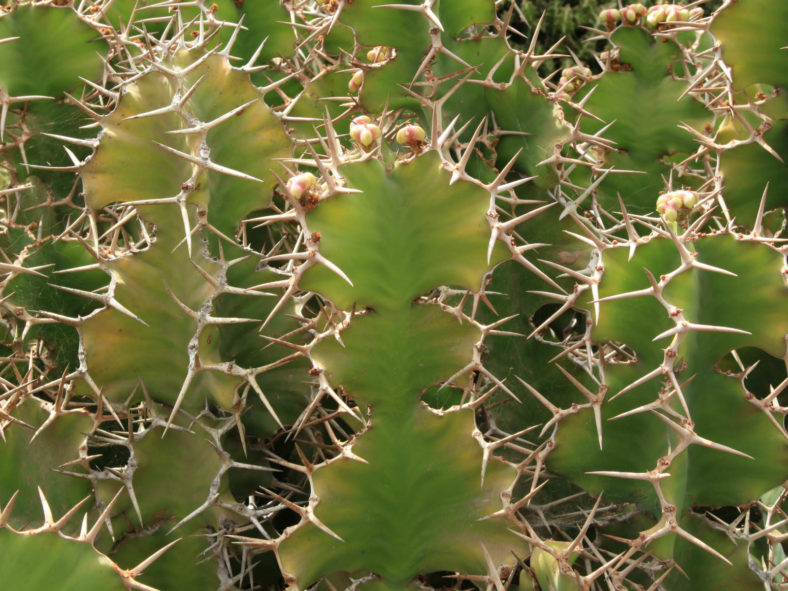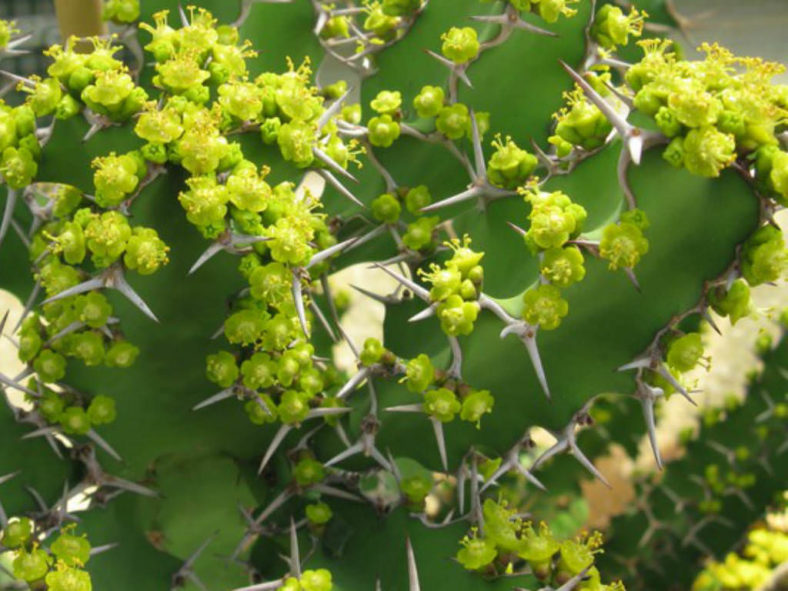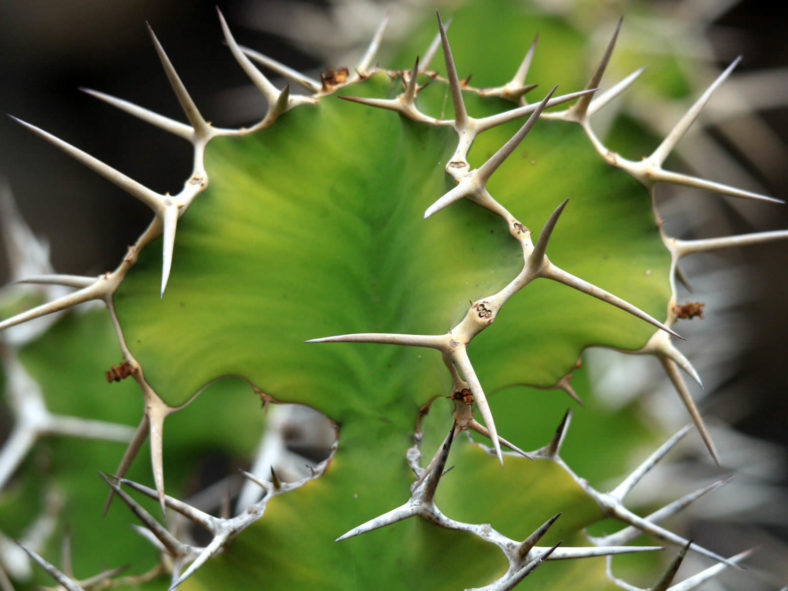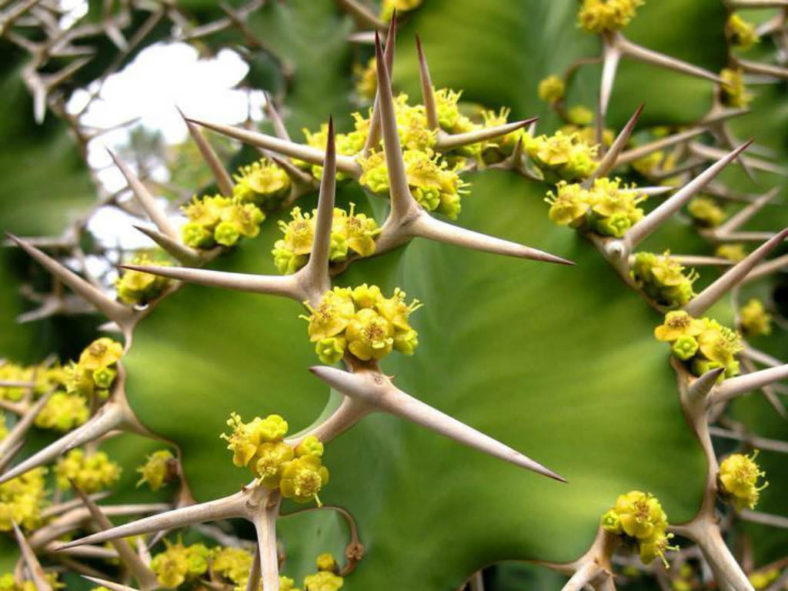Scientific Name
Euphorbia grandicornis Goebel ex N. E. Br.
Common Name(s)
Cow's Horn, Cow's Horn Euphorbia, Big Horn, Big Horned Euphorbia, Big Horned Spurge
Scientific Classification
Family: Euphorbiaceae
Subfamily: Euphorbioideae
Tribe: Euphorbieae
Subtribe: Euphorbiinae
Genus: Euphorbia
Etymology
The specific epithet "grandicornis" (pronounced "gran-dih-KOR-nis") means "large-horned" and refers to the pairs of long spines of this species.
Origin
Euphorbia grandicornis is native to South Africa, Swaziland, Mozambique, and Kenya.
Description
Euphorbia grandicornis is a succulent shrub with erect, green, 3- to 4-winged branches with a zigzag pattern and paired spines along the edges. The branches can grow up to 6.6 feet (2 m) tall and 4 inches (10 cm) wide. The spines are gray to brownish, measuring up to 3 inches (7.5 cm) in length, and arranged in pairs. The tiny leaves between the spines appear in summer and drop off later.
During late spring, brilliant yellow cyathia appear in groups of 3 along the tip of the stem. The central cyathium is stalkless and composed of only male flowers, while the other two are stalked and bisexual. The fruits are pretty attractive, purple, 3-lobed capsules.

Subspecies of Euphorbia grandicornis
- Euphorbia grandicornis subsp. grandicornis
- Euphorbia grandicornis subsp. sejuncta
Hybrids of Euphorbia grandicornis
How to Grow and Care for Euphorbia grandicornis
Hardiness: USDA hardiness zones 10a to 11b: from 30°F (-1.1°C) to 50°F (10°C).
Euphorbias are very easy to care for. These plants require a little pampering to become established, but once they are, they are self-sufficient. More die from overcare and watering than from neglect. Euphorbias need well-draining soil and ample sunlight. They are not particular about soil pH, but cannot tolerate wet soil. Unlike most succulents, Euphorbia does not handle long periods of drought well. It may need weekly watering during the summer. Water whenever the top 6 inches of soil are dry. Water deeply, but avoid letting them sit in wet soil, as this can cause root rot. Add some organic matter or fertilizer to the planting hole. Feed with a half-strength fertilizer monthly if you are growing them in containers or your soil is poor.
These succulents can be grown from seeds, but the seeds can be difficult to germinate (or even find). They are usually propagated by cuttings. This can be tricky because of the exuding sap. Rooting hormone is recommended with Euphorbias. They tend to grow problem-free, but there are a few pests and diseases to be alert for.
Learn more at How to Grow and Care for Euphorbia.
Links
- Back to genus Euphorbia
- Succupedia: Browse succulents by Scientific Name, Common Name, Genus, Family, USDA Hardiness Zone, Origin, or cacti by Genus
Photo Gallery
Click on a photo to see a larger version.


